False beliefs are the invisible chains that quietly shape our thoughts, emotions, and actions. Rooted in childhood experiences, societal expectations, or past traumas, these beliefs can limit personal growth and create self-sabotaging patterns that prevent us from reaching our full potential. But how do we recognize and overcome them?
Why We Believe False Things—and Why It’s Hard to Let Go
We all hold beliefs that aren't entirely true, whether they stem from self-deception, false memories, or simply misunderstanding information. Even when presented with evidence to the contrary, we often cling to these beliefs—especially in today’s politically polarized climate, where opinions on issues like climate change or vaccines can be influenced by political affiliations.
The persistence of false beliefs isn’t about intelligence or mental health; it’s part of being human. In False: How Mistrust, Disinformation, and Motivated Reasoning Make Us Believe Things That Aren’t True, the 3M Model explains why we hold onto misconceptions:
1. Mistrust: We often place our trust in unreliable sources while dismissing truthful ones.
2. Misinformation: False information, whether intentional (disinformation) or not, can take root and shape our views.
3. Motivated Reasoning: We rationalize beliefs to fit our identities, accepting information that supports our worldview and rejecting what contradicts it.
Ultimately, no one is immune to false beliefs—it’s part of our cognitive wiring. Understanding why we hold them is the first step toward overcoming them.
What Are False Beliefs?
False beliefs are deeply ingrained ideas we hold about ourselves, others, or the world that aren't based on objective reality. These beliefs are often subconscious and manifest as recurring thoughts like:
"I’m not good enough."
"I don’t deserve success."
"People will always leave me."
"I need to be perfect to be loved."
Even though these statements feel real, they are distortions of reality shaped by fear, insecurity, or past pain.
The Origins of False Beliefs
False beliefs usually form during early life experiences, and they are influenced by several key factors:
1. Childhood Conditioning: Negative feedback or traumatic events in childhood can plant the seeds of unworthiness or fear.
2. Societal Pressure: Cultural standards can lead us to believe that success, beauty, or happiness looks a certain way.
3. Past Failures: Repeated setbacks may reinforce limiting thoughts like "I always fail," which can make us hesitant to try again.
4. Genealogical thought patterns
5. national thought patterns and so on.
Signs You’re Stuck in False Beliefs
Recognizing false beliefs is the first step toward overcoming them. Common signs include:
Repeating negative patterns in relationships or careers.
Feeling stuck despite efforts to change.
Frequent self-criticism or imposter syndrome.
Avoiding opportunities due to fear of failure.
The Science Behind False Beliefs
Humans are capable of learning vast amounts of information and retaining it over long periods. However, memory processes—specifically the construction, representation, and updating of knowledge—can sometimes create or reinforce false beliefs. These beliefs can lead to misconceptions about our abilities or the world around us.
Cognitive science shows that false beliefs are often adaptive, even though they are not always accurate. In fact, memory distortions, such as false memories, can be induced through techniques like imagination inflation, hypnosis, or suggestive feedback. Studies indicate that false memories are not only easily created but also deeply influential, making them a powerful contributor to persistent false beliefs.
How to Overcome False Beliefs
Overcoming false beliefs requires intentional effort and self-awareness. Here’s how you can start transforming these limiting thoughts:
Identify the Beliefs: Pay attention to your inner dialogue. Write down recurring negative thoughts and reflect on their origins. Where do they come from, and why do you hold them? Recognizing these beliefs is the first step toward change.
Challenge the Narrative: Ask yourself, "Is this belief objectively true?" Gather evidence from your life that disproves these thoughts. Often, you'll find that the beliefs are based on distorted perceptions, not facts.
Reframe the Thought: Once you’ve identified the false belief, replace it with a more empowering affirmation. For example, if you find yourself thinking "I’m not good enough," shift that to "I am capable and deserving of success." Over time, positive reframing can help replace limiting beliefs with supportive, empowering ones.
Understand the Subconscious Barrier: To be honest, most false beliefs reside deep within the subconscious mind, making them difficult to perceive, let alone eliminate. Since they operate below the level of conscious awareness, many of these beliefs silently influence behavior and choices without us realizing it. Recognizing that these beliefs are subconscious can help you approach them with patience and understanding.
Seek Professional Guidance: Removing deeply rooted false beliefs often requires external support. Energy healing, in particular, is most effective when done by a professional who can help you uncover and dissolve subconscious blocks. As an experienced guide in this transformative process, I can assist you in releasing these limiting beliefs and unlocking your full potential.
Final Thoughts
False beliefs can have a profound impact on our lives, shaping our decisions and experiences in ways we may not even be aware of. But by understanding their origins, recognizing their influence, and actively working to replace them with healthier, more empowering beliefs, we can create lasting change. With the right tools, support, and mindset, overcoming false beliefs is not only possible—it’s transformative.
If you’re ready to take the next step toward healing and transformation, I am here to guide you on your journey to release these limiting beliefs and unlock your true potential.
You Deserve to Heal
Your suffering is not your destiny—it’s your apprenticeship. Every false belief holds a lesson in growth, resilience, and transformation. But you don’t have to do it alone.
Allow yourself to be guided through the process of inner healing. You deserve the freedom that comes with releasing old patterns and embracing your highest potential. If you’re ready to step into a life of clarity, self-worth, and emotional freedom, I’m here to help you on that journey.



